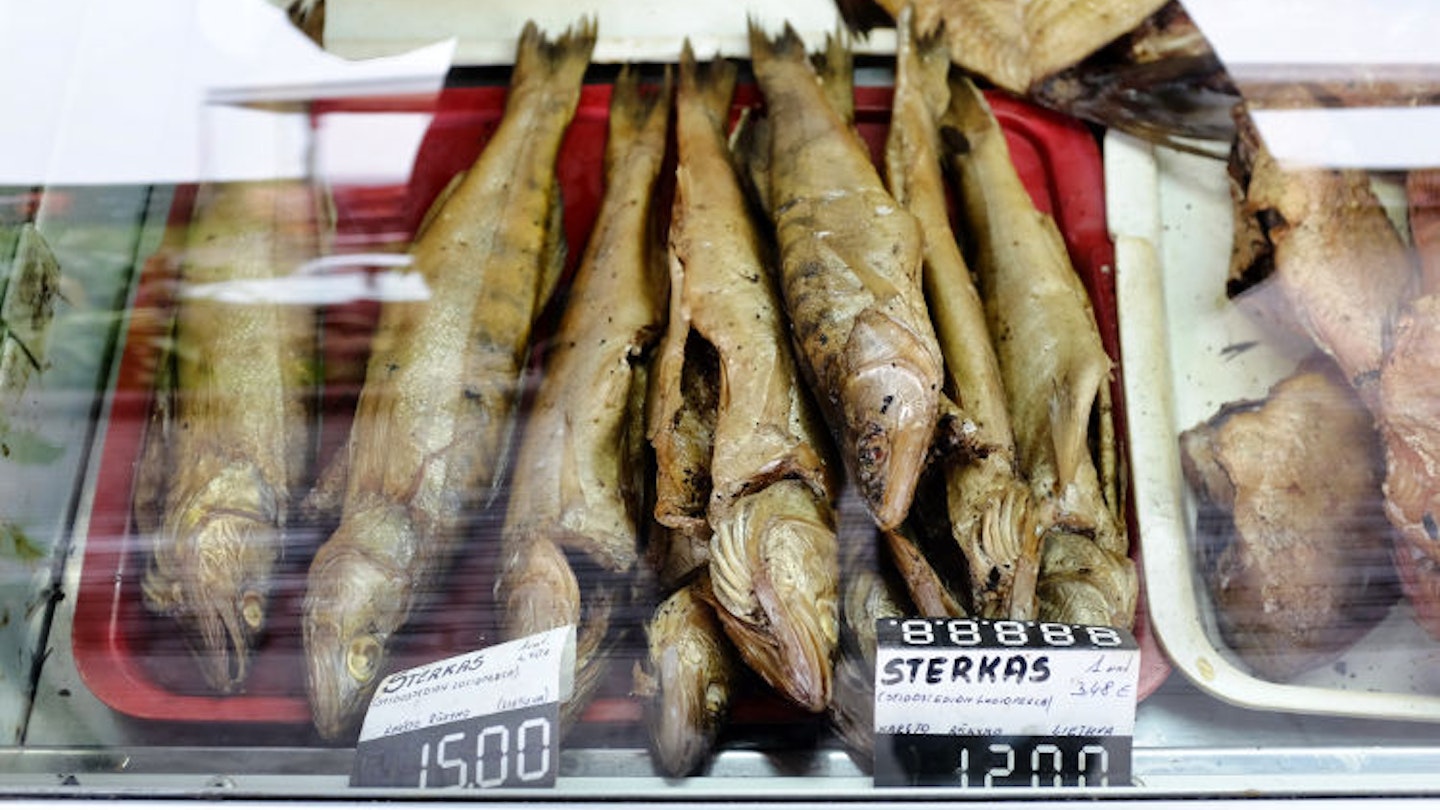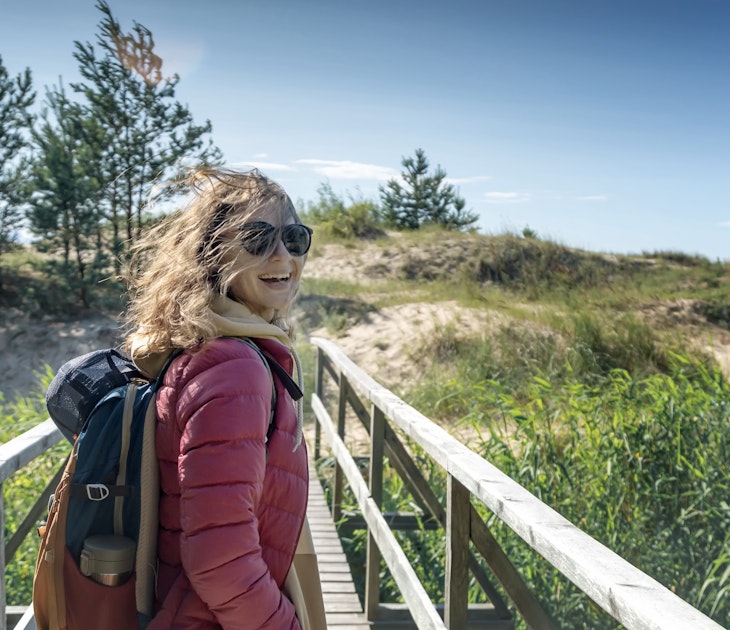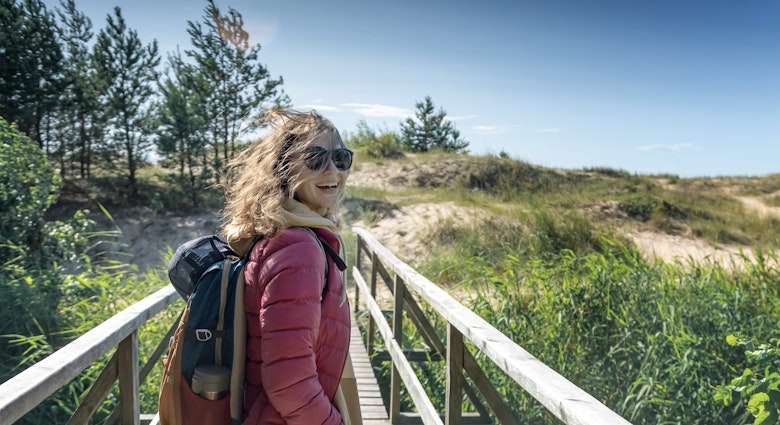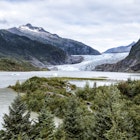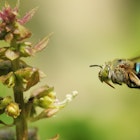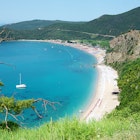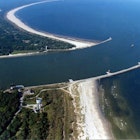A trip to the remarkable Curonian Spit that runs along the southeastern coastline of the Baltic Sea is a highlight of any visit to Lithuania. The spit, split between Lithuania and Russia's Kaliningrad province, extends south from the Lithuanian seaport of Klaipėda. It's a fragile, peaceful ecosystem of pine groves and sand dunes that offers something for everyone.
Pristine sand beaches attract sunbathers during Lithuania's short summer season. Others come to hike the dunes, cycle, or simply recharge their batteries, nourished on a steady diet of smoked fish and heady sea air.
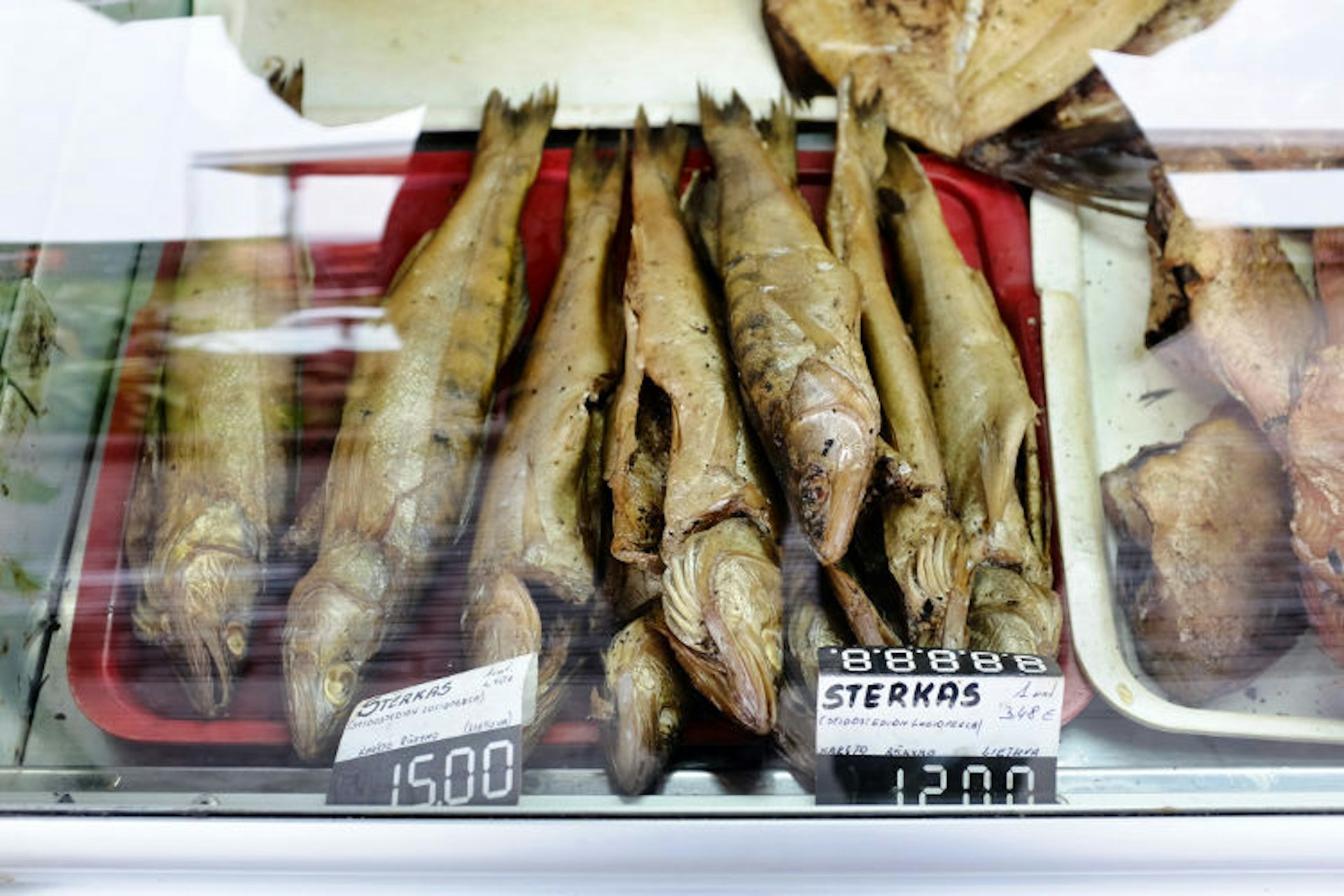
The long and narrow Curonian Spit is sparsely populated. Just a handful of villages, including Juodkrantė and our favourite, Nida, are inhabited year-round. The spit, itself, is under the protection of the Curonian Spit National Park, which was formed in 1991 to safeguard this rare preserve of dunes and pine groves.
The villages are connected by a lone highway, which runs the 50km from Smiltynė in the north to Nida on the Kaliningrad border. International cycling path EuroVelo 10 also extends the length of the Lithuanian portion of the spit and links the villages all the way to Latvia to the north and points beyond.
Lithuania's 'Sahara'
Scaling the spit's majestic sand dunes can feel like a quasi-religious experience. The most impressive dune on the spit, the 50m Parnidis Dune, rises to the south of Nida and extends all the way into Kaliningrad. The best way to reach the summit is to follow the coastline of the Curonian Lagoon from Nida port for about 1km before bearing right into the woods and climbing a series of wooden steps to the top.
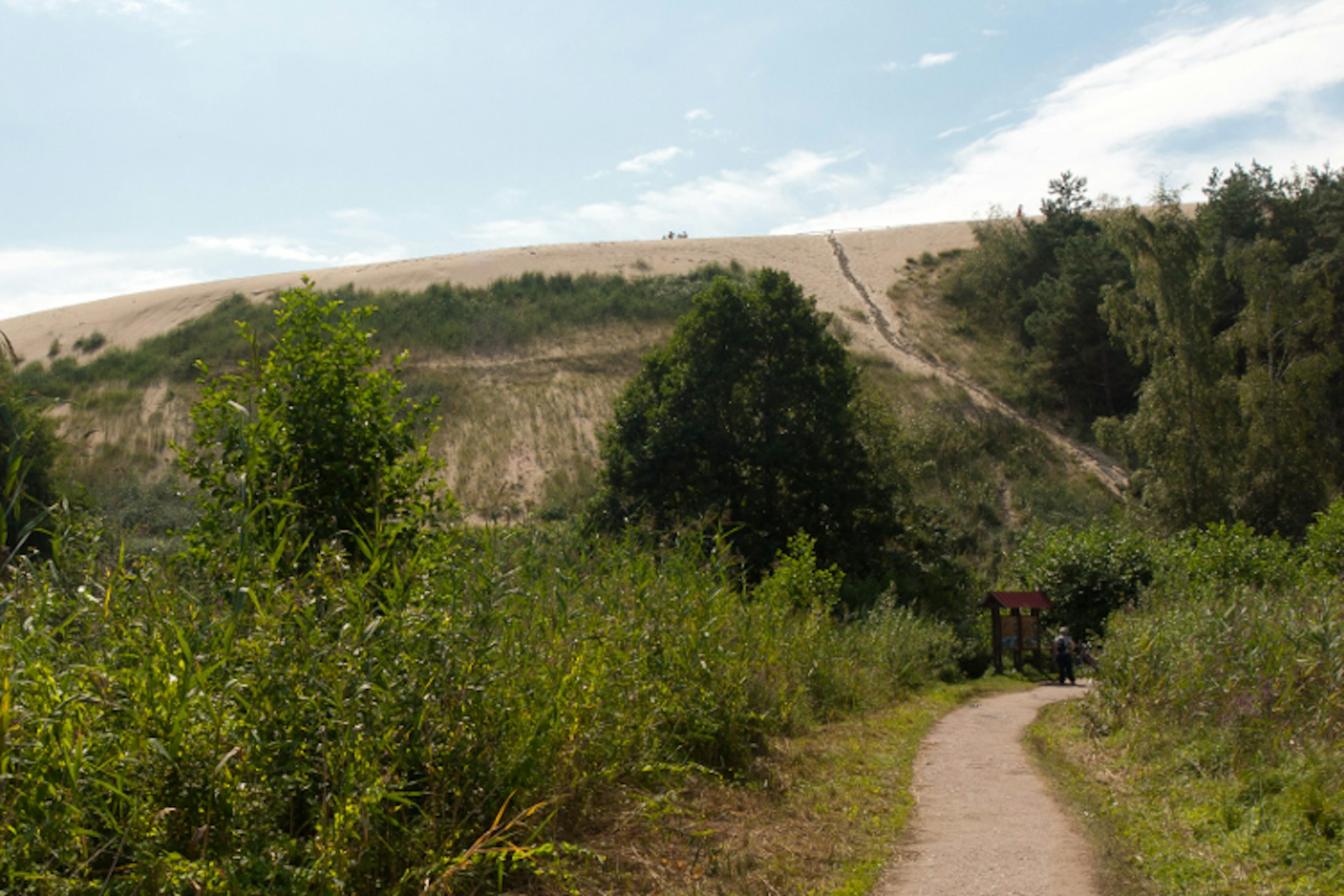
The summit is marked, fittingly, by a 12m-high sundial dotted with pagan and runic symbols and a panorama of sand spreading out to the south that would not be out of place in the Sahara. The dunes are fragile and constantly evolving. It's important not to stray from the marked pathways to minimise the impact on the dunes and especially on the surrounding flora that helps to anchor the sand.
From the top of Parnidis Dune, Nida's wide, white beach stretches along the Baltic Sea about 2km to the west. Trails lead across the top of dune and down the other side. After 100m or so, pick up one of several roads or paths that head west. If you'd like to hit the beach without climbing the dune, simply walk west from Nida centre along the main street, Taikos gatvė, for about 20 minutes.
Aside from hiking and swimming, there are loads of activities in season. Many hotels and guesthouses rent bikes. Nida port is filled with boat operators offering short, hour-long excursions in the lagoon or more-adventurous trips across the lagoon to the Nemunas delta and the pretty village of Mingė.
When it rains...
Even in summer, the weather on the spit can be fickle. Fortunately, there are plenty of rainy-day activities – though even in a drizzle the scramble up to the dune can be exhilarating.
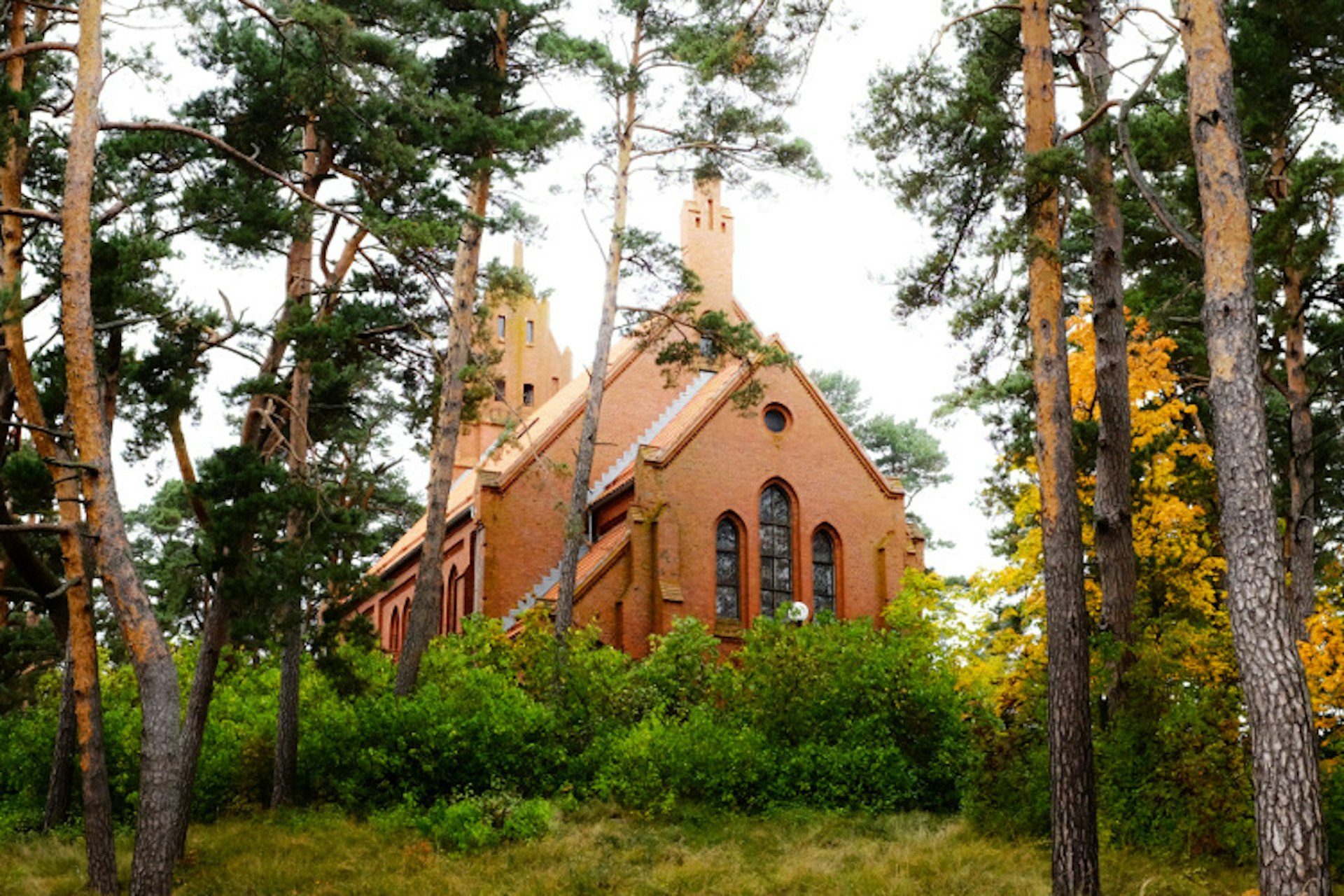
For centuries, the spit belonged to the German province of East Prussia, and in the 19th and early-20th centuries, the area attracted many German writers and intellectuals drawn here by the tranquil setting and sea air. In the early '30s, German novelist and Nobel Prize winner Thomas Mann built a summerhouse 2km north of Nida. He spent three seasons here before being forced out of Germany by the Nazis. These days, Mann's cabin houses the Thomas Mann Memorial Museum, with a small collection of photos, newspaper clippings and letters from the writer's time on the spit.
The German cultural influence can still be felt strongly at the lovely, lonely Evangelical-Lutheran Church, a stately redbrick building that shares a remote pine wood with an old German cemetery. The church is located 1km north of Nida centre, not far from the Thomas Mann Memorial Museum.
Just across the street from the church, stop by the tiny Amber Gallery Museum to take in the museum's small but colourful collection of fossilised tree resin (some pieces date back 50,000 years). Local artists sell their own jewellery designs through the museum, and the museum itself runs workshops for amber fans to create their own works of art.

Making it happen
Summer, from early June to mid-September, with warm temps and long days that stretch to 10pm and beyond, is the best time to visit the spit. Spring and autumn are quieter and offer their own charms, though some restaurants and hotels shut down for the season after September.
As the largest village on the spit, Nida offers the best range of accommodation and eating options. Many of the nicest places to stay are in traditional wooden seaside cottages, often painted in trademark crimson with pretty blue and white trim.
One of our favourites is Misko Namas, a prim cottage about five minutes' walk from the centre, where guests have their own small kitchens and access to a pretty shaded garden. Closer to the port, Naglis has friendly owners and plain but comfortable rooms, some with their own balconies.
Many restaurants close out of season, but one treat that stays open most of the year is Tik pas Joną (signposted outside as
'Užeiga Sena Sodyba'), a casual spot next to Nida port on the Curonian Lagoon. The speciality here is freshly smoked fish like bream, mackerel or eel, served on a paper plate with a glass of beer.
Accessing the spit requires crossing the Curonian Lagoon and takes some advanced planning. Klaipėda is the main gateway and has two ferries, one for passengers and bikes, and a larger ferry, outside of town, for cars and buses. Once onto the spit itself, a bus links the villages, terminating at Nida. The helpful staff at the Klaipėda Tourist Office (www.klaipedainfo.lt) can help sort out ferry and bus timetables. The spit's official tourism website, www.visitneringa.com, has loads of useful information for getting to the spit and spending time once you're there.
Mark Baker is an independent travel writer based in Prague. He's a frequent traveller around Central and Eastern Europe and co-author of the Lonely Planet guide to Estonia, Latvia & Lithuania.

